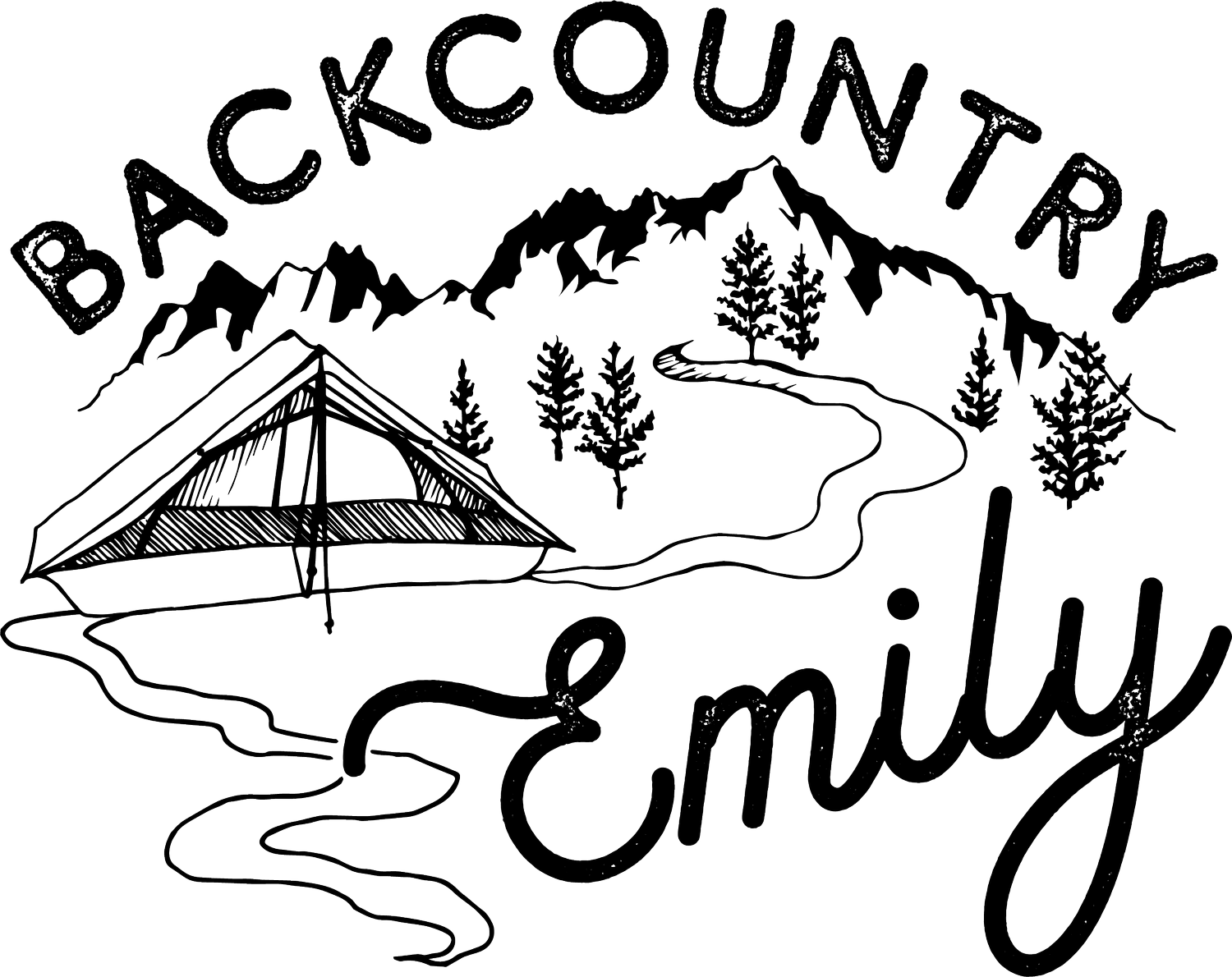Review of Backcountry Foodie's Backpacking Recipes
Eating yummy food while backpacking is arguably one of the greatest parts about backpacking! Right?! Well, I was getting a little bored with my average backpacking fare, and wanted to try some new recipes on the trail, especially for my John Muir Trail thru-hike back in 2020.
I’ve been following Aaron on Instagram (@backcountry_foodie) for a few years now (and finally got the chance to meet and camp with her for a bit on the CT in 2021!), and was super curious about her backpacking recipes that she claimed were ultralight and ultra-delicious! I was looking to try something that was more calorie-dense than your average Mountain House meal, and tastier than just a package of ramen or rice sides. I took the plunge and paid for the premium 175 recipes & meal planning dashboard (support your fellow thru-hikers business dreams, guys!)* and started perusing the website and recipes. Fast-forward to my John Muir Trail food prepping, and most of my breakfasts, lunches, and dinners were recipes from Backcountry Foodie. I’ve also used various recipes on smaller backpacking trips too! Read on to hear what I thought of the platform and the food!
*The current subscriptions for the platform consist of three membership options ranging from $2.99 - 9.99/mo.
Disclaimer: This post contains affiliate links to Backcountry Foodie, which means I get a small commission if you make a purchase (at no extra cost to you). It’s one of the ways I can keep producing free guides and resources for my readers. As always, my thoughts and opinions are honest and entirely my own.
WHAT IS BACKCOUNTRY FOODIE?
Backcountry Foodie is a meal-planning service that provides backpacking meal recipes. All of the recipes are vegetarian-friendly, and there are also many vegan, gluten-free, nut-free, and low sugar recipes as well. The recipes are a mix of cook and non-cook, are all ultralight, and use minimal water for rehydrating (nothing more than 8 oz, I believe!) - basically a UL backpacker’s dream! Since Aaron is a dietician, the meals have been balanced to maximize nutrition within weight constraints. Backcountry Foodie also provides meal prep resources like dehydrating info, food journals, multi-calorie (3,000 - 5,000 calorie/day) meal plans, a meal & calorie planning tool, and masterclasses for premium subscribers.
Some commonly used ingredients: oats, freeze-dried fruit and veggies, whole milk powder, dehydrated orzo, and of course, peanut butter!
A few more of my favorite recipes, and the really nice sticker label templates that we made!
WHAT I LIKED
Meal Taste & Variety! - I’ve tried about 20 recipes so far, and I’ve pretty much enjoyed all of them. I say pretty much because sometimes I don’t plan correctly, and I’m just really not craving a certain something in the backcountry. Some of my favorite recipes are the ramen ones: Thai Peanut Ramen is delicious, and so is Sweet and Sour Ramen! Taco Mac & Cheese is also amazing. I was a little nervous about trying TVP for the first time, but it was surprisingly good! The chia puddings and oatmeals are also awesome breakfasts. All of the recipes are vegetarian, with many options to substitute ingredients to make them vegan, gluten-free, or dairy-free.
Calorie Dense & Ultralight - So many of these recipes have 400+ calories in them and only weigh a few ounces! The calorie-to-weight ratio is unmatched. These meals also have more fat content compared to store-bought meals, which is helpful when backpacking, as fat contains the highest calorie-to-weight ratio, and helps you feel full for longer periods of time. An average oatmeal recipe from Backcountry Foodie gives me about 3 hours of being satiated before I feel the need to eat again on a trip.
Packability - I haven’t tried all of the recipes, but out of all the ones I have tried, most of them fit in a regular sandwich ziplock baggie, and some could even fit in the smaller snack bag size! I’ve been able to fit 5 days of meals for myself into a smaller BV 450 bear canister using these recipes and other snacks.
Repeated Ingredients - This is really useful for batch-making recipes. Many of these meals can be made way ahead of time and vacuum sealed, too, which Aaron always gives advice for on the recipes. This is also great for the budget too, so you don’t have to buy separate ingredients for every single recipe.
Online Resources (articles, webinars) - Aaron is a registered dietician, and has a plethora of knowledge to share! Its really handy to have these resources, especially if you really want to dial in your food plans.
Meal Planner - This is a cool feature where you can select recipes to add to a list. You can create columns, which you can use as “days” of your backpacking trip, and drag recipes around to plan your meals. There is a calorie and nutrition facts calculator so you can really dial in all of your food needs for your trips. Aaron also supplies select commercial foods that you can add to your planner as well! Items like Good-To-Go meals, Clif bars, candy, etc. This is awesome for planning those snacks into your day too.
Crowd-Sourcing - The platform is friendly to feedback. I like how members can comment on recipes and talk about substitutions they make and if it works or not.
WHAT I DIDN’T LIKE
Doing the “work” - Ok, if you don’t already know, I’m pretty lazy. So, I tend to avoid the recipes where I actually have to dig the dehydrator out of the garage, plug it in, cook pasta, and then dehydrate it. Talk about a lot of work (lol)! Even assembling some of the easier meals just takes time, and obviously a lot more time than just grabbing a pre-packaged meal. However, it’s usually worth it to do the work, I’m just usually a harried mess before a backpacking trip!
Some niche ingredients - You do have to prepare for some of these meals. You can’t expect to go down to your local grocery store and find freeze dried or dehydrated items. I even live in the Bay Area and we just started to get coconut oil packets in the regular Safeway. Still no ghee packets though. So you will have to do some ordering of ingredients online. Another bummer is that some of the ingredients are only used in a couple of recipes, but you end up buying a much larger quantity than you need. Honey powder comes to mind for me. The nice thing though, is that Aaron usually gives substitution tips in the recipe, so finding individual honey packets could prevent the need to buy a whole bottle of the powder that then goes bad.
Lots of Backcountry Foodie meals for JMT resupply!
Freezer ziploc bags are more durable and will hold boiling water!
Beans & Fritos! So good!
Sweet & Sour Ramen - another favorite!
THE VERDICT
Overall, I love this service! If you go on a lot of backpacking trips and don’t like the idea of spending tons of money (usually $12+ per meal) on dehydrated meals, or all of the sodium that comes with some of them, and you’re looking for some inspiration to add pizzazz to your boring breakfast oatmeal or couscous, this program is for you!







